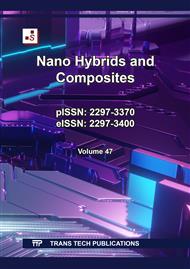p.1
p.11
p.17
p.31
p.41
Testing of Tensile Strength and Elongation at Break of Polymer Packaging Materials
Abstract:
The basic task of packaging is to protect the product from mechanical, physicochemical and biological changes. Inappropriate material and incorrectly selected packaging can significantly affect the qualitative characteristics of the product as well as the shelf life of the packaged content. Packaging materials are chosen based on the characteristics of the product to be packaged, the intended packaging procedure, and the required shelf life of the product. The strictest requirements apply to packaging materials for food and pharmaceutical products. Polymeric materials are used as monomaterials or in combination with other materials. This paper will present the results of testing polymer materials used for the production of food products. Among the characteristics, the results of tests of elongation at break and tensile strength will be presented. The investigated materials were polymer films produced by the coextrusion process (PE/PA/PE and PP/PA/PP) and polymer materials for the production of glasses for dairy products (polystyrene tape, polypropylene compound tape and polypropylene tape with a barrier layer).
Info:
Periodical:
Pages:
1-9
Citation:
Online since:
October 2025
Authors:
Price:
Сopyright:
© 2025 Trans Tech Publications Ltd. All Rights Reserved
Share:
Citation:


